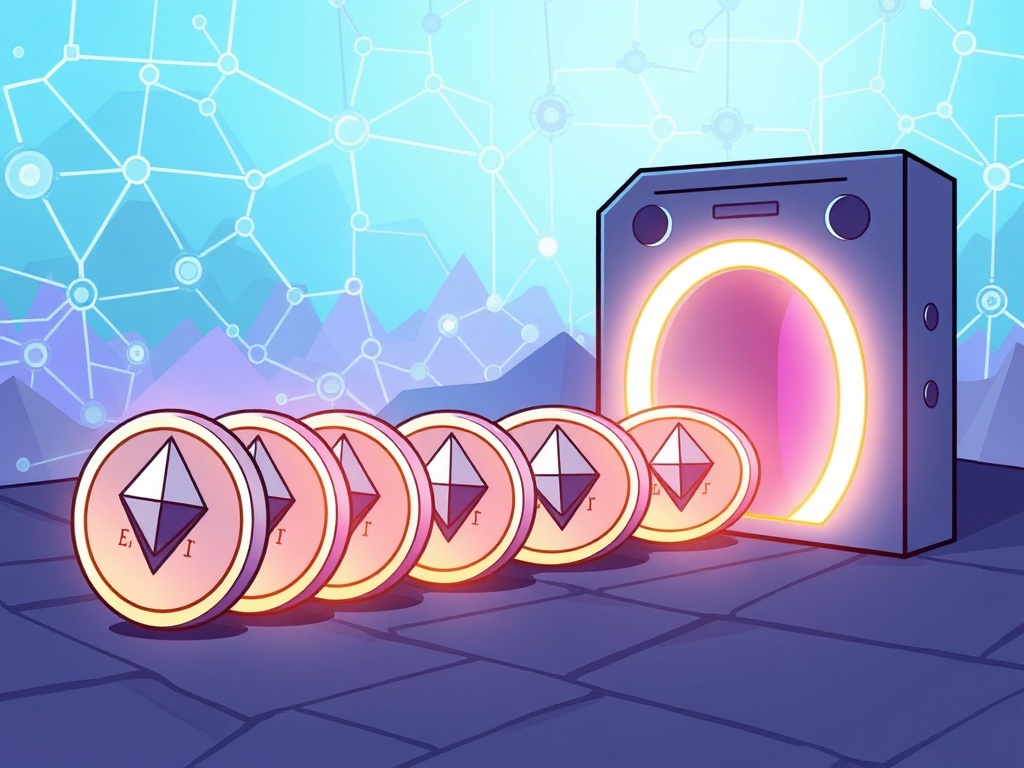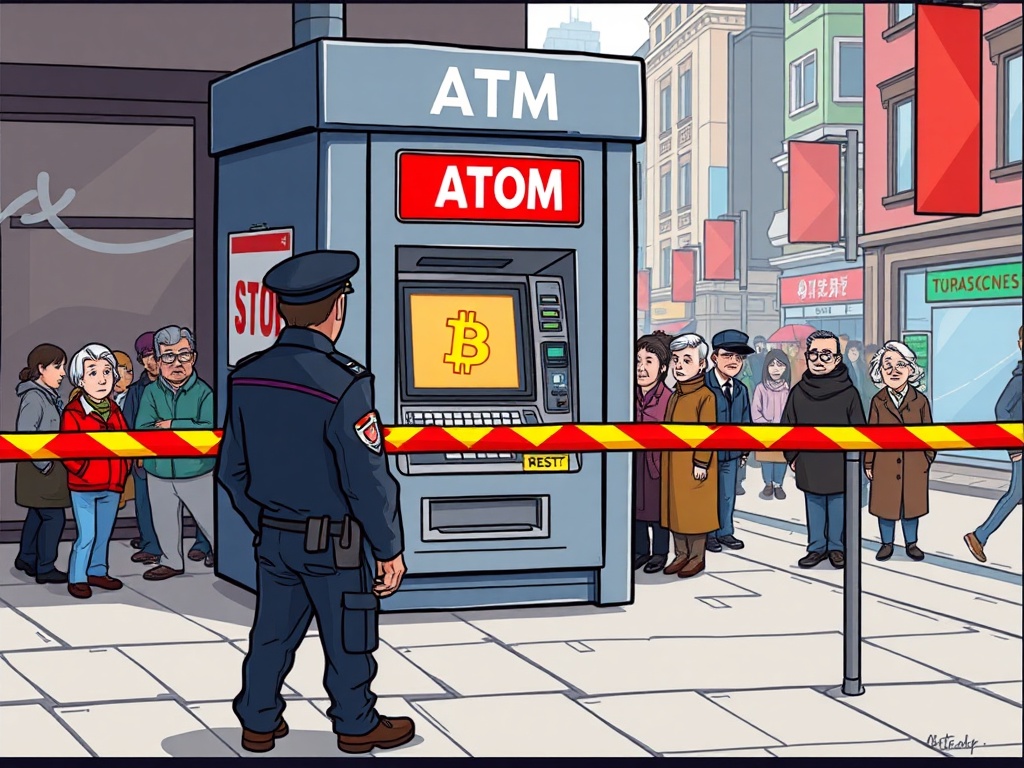BitcoinWorld

Ethereum Unstaking: Decoding the Growing ETH Queue
The world of cryptocurrency is always buzzing with activity, and right now, a significant development is unfolding on the Ethereum network. Many in the crypto community are closely watching the growing queue for Ethereum unstaking. This process is crucial for the health and liquidity of the network, and understanding its dynamics offers valuable insights into Ethereum’s evolving Proof-of-Stake ecosystem.
Understanding the Ethereum Unstaking Queue
Currently, a substantial amount of Ether (ETH) is in line to be withdrawn from the network. This queue reflects the ongoing activity of validators adjusting their staked positions. Here’s a snapshot of the current situation:
- Significant Unstaking Demand: A remarkable 831,056 ETH are presently awaiting unstaking on the Ethereum Proof-of-Stake (PoS) network.
- Extended Wait Times: Unstaking these funds is not an instant process; it is expected to take over 14 days to complete, according to data from validatorqueue.com.
- Balancing Act: Conversely, 355,919 ETH are awaiting staking, indicating a healthy interest in joining the network’s validation process. Staking is a quicker process, typically taking over 6 days to complete.
- Network Scale: The Ethereum network currently boasts 1,085,264 active Ethereum validators, collectively securing the blockchain with approximately 35.6 million ETH staked.
These figures highlight a dynamic environment where large volumes of ETH are constantly moving in and out of the staking mechanism, directly impacting the ETH unstaking queue.
What Drives Ethereum Staking and Unstaking?
Ethereum staking is a fundamental component of the network’s security and operation under its Proof-of-Stake consensus mechanism. Individuals and entities stake their ETH to become validators, earning rewards for verifying transactions and proposing new blocks. This system replaced the energy-intensive Proof-of-Work model, making Ethereum more sustainable.
However, participants also need the flexibility to withdraw their staked assets. Unstaking allows validators to exit the network, access their funds, or reallocate their capital. The presence of an ETH unstaking queue ensures network stability by preventing a sudden, large-scale withdrawal that could compromise security. It’s a carefully designed throttle to maintain equilibrium.
Navigating the ETH Unstaking Queue: Challenges and Insights
The length of the ETH unstaking queue directly impacts liquidity for validators. A longer queue means a longer wait to access funds, which can influence investment decisions. While a queue is a necessary mechanism, its size is often a topic of discussion within the community.
Observing these queue lengths provides valuable insights into validator behavior and overall network sentiment. A consistently long unstaking queue might suggest validators are taking profits or re-evaluating their commitments, while a balanced queue indicates healthy participation and a stable ecosystem for Proof-of-Stake Ethereum.
The Role of ETH Validators in Network Security
ETH validators are the backbone of the Ethereum network. They are responsible for processing transactions, creating new blocks, and maintaining the integrity of the blockchain. Their commitment of staked ETH acts as a security deposit, ensuring they act honestly and in the best interest of the network. Any malicious behavior can lead to “slashing,” where a portion of their staked ETH is forfeited.
The robust number of over a million validators and 35.6 million ETH staked demonstrates the strong confidence and decentralized nature of the network. This collective effort secures billions of dollars in value and supports a vast ecosystem of decentralized applications.
The Future of Proof-of-Stake Ethereum
The transition to Proof-of-Stake Ethereum was a monumental achievement, significantly reducing the network’s energy consumption and paving the way for future scalability upgrades. The current dynamics of the Ethereum unstaking and staking queues are natural parts of a maturing system. They reflect the constant ebb and flow of participants, all contributing to a more secure and efficient blockchain.
As the network continues to evolve, these metrics will remain key indicators of its health and the confidence of its participants. The transparent nature of these queues, publicly available through tools like validatorqueue.com, empowers users and stakeholders to monitor the network’s operational status in real-time.
Conclusion: A Dynamic Ecosystem in Motion
The substantial amount of ETH awaiting unstaking and staking underscores the vibrant and dynamic nature of the Ethereum network. While the ETH unstaking queue requires patience, it is a testament to the network’s robust design, ensuring stability and security. As Ethereum continues its journey, understanding these fundamental mechanics is crucial for anyone engaging with this revolutionary blockchain. The network is not just about transactions; it’s about a community of validators and users collectively building the future of decentralized finance.
Frequently Asked Questions About Ethereum Staking and Unstaking
- What is Ethereum staking?
Ethereum staking involves locking up your ETH to help secure the network and validate transactions, in return for earning rewards. It’s a core part of Ethereum’s Proof-of-Stake consensus mechanism. - Why is there an ETH unstaking queue?
The ETH unstaking queue is a built-in mechanism designed to manage the flow of withdrawals. It prevents sudden large-scale unstaking events that could destabilize the network and ensures an orderly exit process for validators. - How long does Ethereum unstaking take?
Based on current network conditions, unstaking ETH can take over 14 days. The exact time depends on the size of the Ethereum unstaking queue and network activity. - What is a validator on Ethereum?
An Ethereum validator is a participant who has staked 32 ETH and runs validator software to propose and attest to blocks on the blockchain, helping to secure the network and earn rewards. - Is the long unstaking queue a concern for Ethereum’s health?
Not necessarily. While a long queue means longer wait times, it also indicates significant activity and participation. The system is designed to handle these queues to maintain network stability, showcasing the resilience of Proof-of-Stake Ethereum.
Found this deep dive into Ethereum’s staking and unstaking queues insightful? Share this article with your network and help others understand the fascinating dynamics of the world’s second-largest cryptocurrency!
To learn more about the latest Ethereum trends, explore our article on key developments shaping Ethereum’s future price action.
This post Ethereum Unstaking: Decoding the Growing ETH Queue first appeared on BitcoinWorld and is written by Editorial Team





